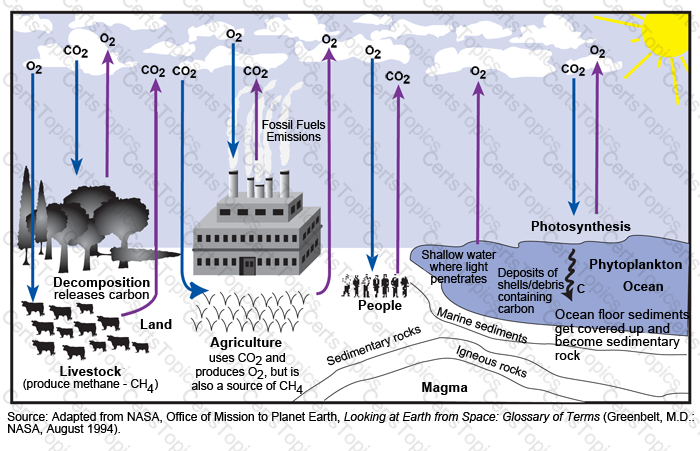Science is a systemized body of knowledge based on observation and experimentation. Technology involves applied science and the practical applications of scientific knowledge. The making of lenses for eyeglasses is a technology that is based on the scientific principles of optics explaining how light rays are bent by finely ground lenses.
Which example would be considered science rather than technology?
As pressure in a closed container is increased, the volume, or amount of space that a gas takes up, decreases. Divers who work underwater use tanks containing oxygen in order to breathe. The amount of oxygen in the tanks allows the divers to stay underwater for some time, yet the tanks are not huge.
Which statement best explains this occurrence?
Earth’s atmosphere contains naturally-occurring ozone. Ozone, which contains three oxygen atoms joined together (O3), forms a layer miles above Earth’s surface. The layer serves as a shield from the harmful ultraviolet rays of the Sun.
A group of chemicals called CFCs (chlorofluorocarbons) are used as refrigerants, propellants, and cleaning solvents. At Earth’s surface CFCs are chemically stable. However, CFC molecules can be broken apart high in the atmosphere and they can destroy the protective ozone layer.
Based on the information, which action would reduce the destruction of the ozone layer?
-- Exhibit --
The carbon cycle is illustrated above. Two of the essential processes involved are photosynthesis in green plants and algae and respiration by almost all organisms. Respiration, as well as burning and other natural decomposition (breakdown) processes, contributes to the amount of CO2 in the air and soil. Photosynthesis uses up CO2 and produces O2, which, in turn, is used up in respiration and the burning of fossil fuels such as coal, oil, and gas.

-- Exhibit --
Based on the information and diagram, which process does not release CO2?